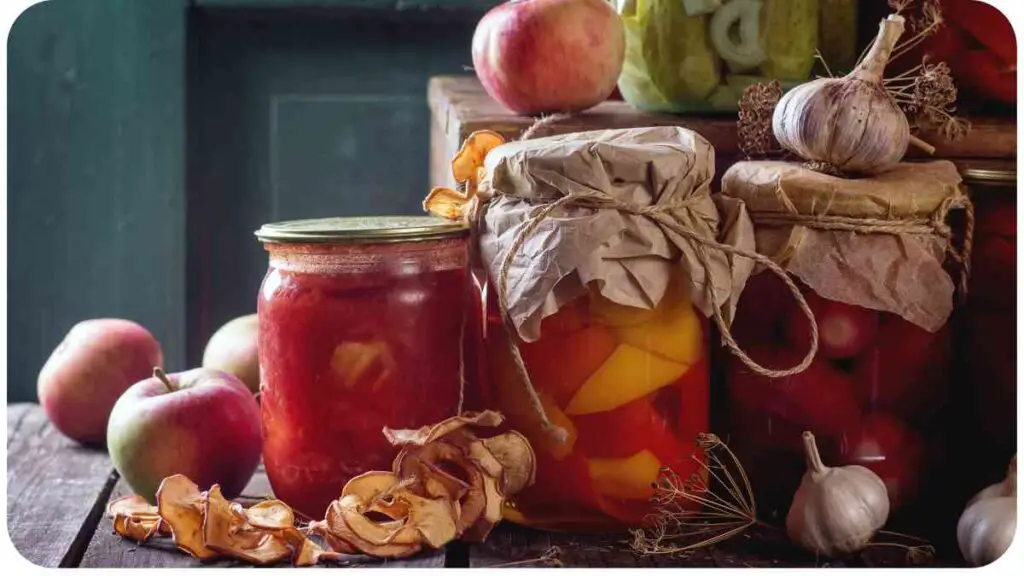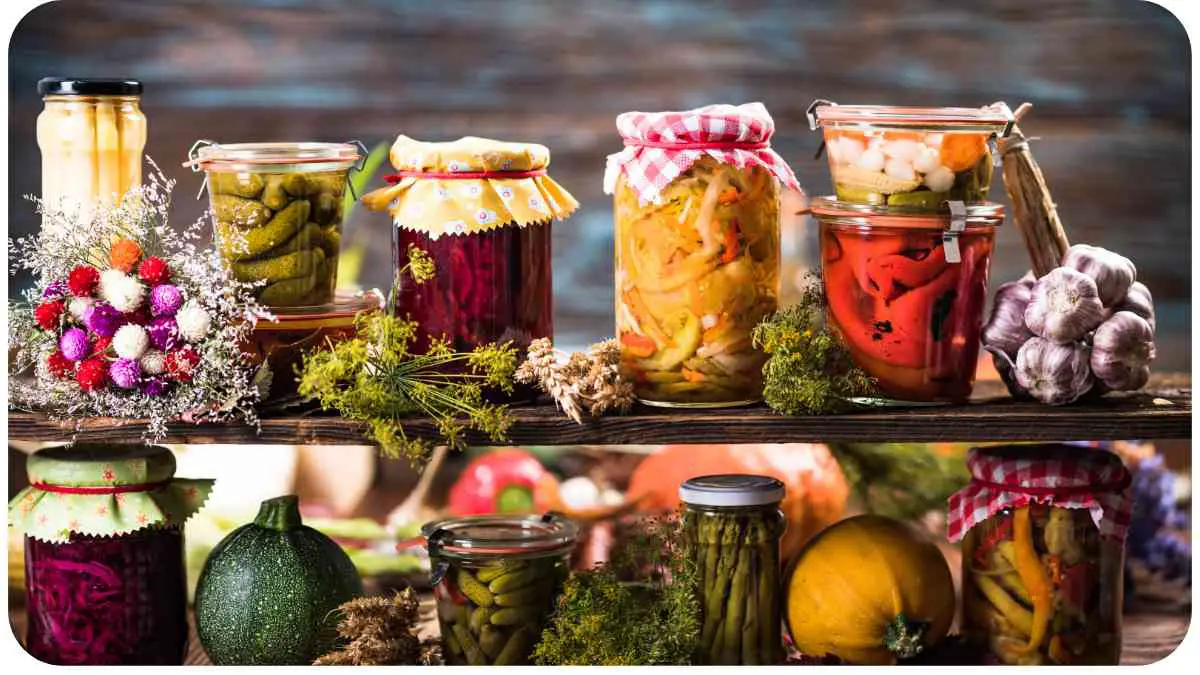Welcome to our comprehensive guide on the truth about preservatives. In this article, we’ll delve into the world of preservatives, debunk common misconceptions, explore their importance in food, discuss their impact on health, and provide insights into natural alternatives and best practices.
With years of experience and expertise in the field, we aim to provide you with the most accurate and up-to-date information. Let’s explore the truth behind preservatives together.
| Takeaway |
|---|
| Preservatives are crucial for maintaining food safety and extending shelf life. |
| Common misconceptions often lead to concerns, but many preservatives have been extensively tested and approved for consumption. |
| Natural products still require proper preservation to prevent spoilage. |
| Synthetic preservatives can be safe and effective when used in accordance with regulations. |
| The FDA regulates preservatives and sets strict safety standards. |
| Preservatives have a minimal impact on health, with adverse reactions being relatively rare and linked to individual sensitivities or allergies. |
| Natural alternatives to synthetic preservatives are available, such as rosemary extract, vinegar, citric acid, and salt. |
| Proper use of preservatives, including dosage, storage, labeling, and checking expiration dates, is essential. |
| Debunking myths is important, as preservatives have numerous benefits and are not always harmful or altering to taste and texture. |
| Case studies demonstrate the success of proper preservative usage in food and skincare industries. |
| Balancing effective preservation with consumer perception is crucial for product success. |
| The future of preservatives holds promise for safer, more sustainable, and consumer-friendly options. |
2. Understanding Preservatives
Before we dive deeper, let’s first understand what preservatives are and why they are essential. Preservatives are substances that are added to various products, including food, cosmetics, and medications, to prolong their shelf life by inhibiting the growth of microorganisms. They play a vital role in preventing spoilage, maintaining product quality, and ensuring consumer safety.
When it comes to food choices, it’s essential to understand the benefits of going organic. Learn more about the importance of choosing organic products in our comprehensive guide. Explore What You Need to Know and make informed decisions.
3. Common Misconceptions about Preservatives
There are several misconceptions surrounding preservatives that have led to confusion and concern among consumers. Let’s address some of these myths and separate fact from fiction:
- Myth 1: Preservatives are always harmful: This is not true. While it is crucial to exercise caution with certain preservatives, many are deemed safe for consumption and have undergone extensive testing.
- Myth 2: All-natural products don’t require preservatives: Natural products are not exempt from spoilage. Without proper preservation, they can still harbor harmful bacteria or molds.
- Myth 3: Synthetic preservatives are always dangerous: The safety of synthetic preservatives depends on various factors such as dosage, specific compound, and regulatory approval.
4. The Importance of Preservatives in Food

Preservatives play a crucial role in maintaining food safety and extending its shelf life, reducing food waste and ensuring that consumers can enjoy products without the risk of contamination. Imagine a world without preservatives where food spoils rapidly, leading to an increase in foodborne illnesses and economic losses. Preservatives help prevent these issues, making food accessible and safe.
5. Different Types of Preservatives and Their Functions
Preservatives come in various forms, each with a specific function to inhibit microbial growth and extend product shelf life. Here are some commonly used preservatives and their primary functions:
| Type of Preservative | Function |
| Antimicrobial | Inhibit bacterial growth |
| Antioxidant | Prevent oxidation |
| Mold inhibitors | Prevent mold growth |
| pH stabilizers | Maintain pH levels |
Different brands offer specific preservatives, each excelling in different functions. For example:
It’s important to choose the right preservative based on the product’s needs and desired preservation properties.
In the world of nutrition, it’s easy to fall for common myths. Bust those myths and get on the right track with this insightful article. Discover Nutrition Myths that need debunking for a healthier lifestyle.
6. FDA Regulations and Safety Standards for Preservatives
The U.S. Food and Drug Administration (FDA) sets strict regulations and safety standards for preservatives. Before a preservative can be used in food, it must undergo rigorous testing and be deemed safe for consumption. The FDA continually monitors the use of preservatives and revises regulations as necessary to ensure public safety.
7. The Impact of Preservatives on Health
A common concern raised by consumers is the impact of preservatives on health. While some individuals may experience adverse reactions to certain preservatives, these cases are relatively rare and often linked to underlying allergies or sensitivities. However, it is essential to be cautious and read labels carefully, especially for individuals with known sensitivities.
8. Natural Alternatives to Synthetic Preservatives
If you prefer to opt for natural alternatives, several options are available. Natural preservatives, such as
| Natural Preservative | Function |
| Rosemary Extract | Antioxidant properties |
| Vinegar | Antimicrobial properties |
| Citric Acid | pH stabilization |
| Salt | Mold inhibition |
These natural preservatives can be used as effective alternatives to synthetic preservatives in various products. Additionally, incorporating natural ingredients can appeal to consumers seeking more natural and organic options.
Are you confused by food labels and what they mean for your diet? Our comprehensive guide helps you make sense of it all. Dive into the world of food labels and their significance in this comprehensive guide.
9. Best Practices for Using Preservatives
To ensure the proper and safe use of preservatives, it is important to follow best practices. Here are some tips to consider:
- Dosage: Follow the recommended dosage instructions specified for each preservative and product to avoid potential health risks.
- Storage Conditions: Properly store products that contain preservatives in cool, dry places away from direct sunlight for optimal preservation.
- Labeling: Ensure that labels clearly list the preservatives used, allowing consumers to make informed choices based on their preferences or allergies.
- Expiration Dates: Regularly check expiration dates on products to ensure their efficacy and safety.
By adhering to these best practices, you can enhance the effectiveness of preservatives while maintaining consumer trust and safety.
10. Debunking Myths about Preservatives

Let’s debunk a few more misconceptions surrounding preservatives:
- Myth 4: Preservatives have no benefits: Preservatives play a vital role in maintaining product quality and safety. Without them, many products would become unsafe and unsuitable for consumption.
- Myth 5: Preservatives always alter taste and texture: While some preservatives may have a slight impact on sensory attributes, manufacturers strive to minimize these effects, ensuring products remain enjoyable.
- Myth 6: Natural preservatives are always safer: Just because a preservative is natural does not automatically make it safer or more effective than synthetic alternatives. It’s essential to consider each preservative’s properties and safety data.
Food additives can be a mystery, but with our quick guide, you can decode their purpose and impact on your diet. Explore the world of additives and their role in your food in this quick guide.
11. Case Studies: Success Stories of Proper Preservative Usage
To provide real-world examples, let’s explore a couple of case studies highlighting the successful use of preservatives in different industries:
Case Study 1: Brand X Edible Products Brand X, a leading food manufacturer, implemented rigorous quality control processes and incorporated the right preservatives for their line of edible products. This enabled them to extend product shelf life while maintaining taste and freshness. With proper preservation techniques, Brand X gained customer trust and achieved significant market growth.
Case Study 2: Brand Y Skincare Brand Y, a popular skincare company, focused on formulating products with effective natural preservatives. By leveraging the antimicrobial properties of certain plant extracts, they created high-quality skincare items that remained safe and stable. The brand’s dedication to preservative efficacy and transparency resonated with consumers looking for natural skincare options.
These case studies demonstrate how proper preservative usage can translate into business success and consumer satisfaction.
12. Balancing Effectiveness and Consumer Perception
Preservatives are essential for product safety and longevity, but consumer perception plays a significant role in product success. Manufacturers must strike a balance between the effective use of preservatives and addressing consumer concerns. Transparency through ingredient labeling, education on preservative safety, and offering alternative options can help build trust and meet consumer preferences.
13. The Future of Preservatives
Innovation within the field of preservatives continues to evolve. Researchers are exploring new ways to enhance preservative effectiveness, develop alternatives with minimal impact on taste and texture, and address specific consumer demands. With advances in technology and ingredient science, the future of preservatives holds promise for safer, more sustainable, and consumer-friendly options.
Cutting down on sugar or seeking alternatives? Discover the various options available to you and make informed choices. Get to know more about Sugar Substitutes and their suitability for your dietary needs.
14. Conclusion
Preservatives are an essential part of our daily lives, preventing spoilage, ensuring food safety, and extending product shelf life. Understanding the truth about preservatives allows us to make informed choices and appreciate their significance.
By incorporating best practices, considering natural alternatives, and debunking common myths, we can strike a balance between effective preservation and consumer satisfaction. Remember to read labels, stay informed, and trust reputable sources as you navigate the world of preservatives.
Further Reading
1. Unlock Food – What You Need to Know about Preservatives
Unlock Food provides an informative article that covers the basics of preservatives, their role in food technology, and the safety aspects to consider. Gain a deeper understanding of preservatives and their significance in the food industry.
2. Hela Spice – Preservatives 101: What You Need to Know
Hela Spice offers an insightful blog post that delves into the fundamentals of preservatives and addresses commonly asked questions. Discover comprehensive information about the different types of preservatives and their functions.
3. Chemical Safety Facts – Preservatives
Chemical Safety Facts provides an overview of preservatives, including their uses, safety considerations, and regulations. Explore a wealth of information on various preservatives and their impact on consumer products.
FAQs
How do preservatives help to prolong the shelf life of products?
Preservatives inhibit the growth of microorganisms, such as bacteria and fungi, that can spoil products. By preventing microbial growth, preservatives extend the shelf life of products, ensuring they remain safe for consumption for extended periods.
Are all preservatives synthetic?
No, preservatives can be either synthetic or natural. Synthetic preservatives are chemically created and are often more potent, while natural preservatives are derived from plant extracts or other natural sources. Both types play a crucial role in product preservation.
Can preservatives affect the taste and texture of products?
While some preservatives may have a minimal impact on taste and texture, manufacturers strive to minimize these effects to maintain product quality. Advances in formulation and technology have led to preservatives with reduced sensory impact.
Are there any natural alternatives to synthetic preservatives?
Yes, there are natural alternatives to synthetic preservatives available. Examples include rosemary extract, vinegar, citric acid, and salt, which possess antimicrobial or antioxidant properties and can be used effectively in various products.
Is it necessary for all products to contain preservatives?
Not all products require preservatives. The need for preservation depends on various factors such as the product’s water content, pH, packaging, and intended shelf life. Manufacturers carefully consider these factors and choose appropriate preservation techniques accordingly.

Hi, I’m Hellen James! I’m a professional chef who has been cooking for over 12 years. In my career, I’ve worked at some of the world’s most prestigious hotels and restaurants. My expertise lies in creating recipes that are simple but delicious, and I love to experiment with new ingredients and techniques. I started this blog because I want to share my passion for cooking with everyone who loves food as much as I do.


